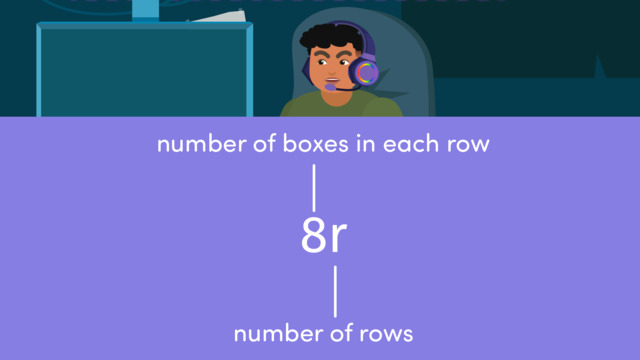Writing and Evaluating Expressions with Exponents
Learning text on the topic Writing and Evaluating Expressions with Exponents
Writing and Evaluating Expressions with Exponents
Exponents are a critical component of algebra and are essential for simplifying and solving mathematical expressions efficiently. They provide a shorthand way of expressing repeated multiplication and significantly streamline the representation and calculation of large numbers.They are often also referred to as indices or powers. By understanding exponents, students can unlock new levels of mathematical proficiency and tackle more complex problems with confidence.
An exponent is a small numeral, known as the power, placed to the upper right of a base number, indicating how many times the base number is to be multiplied by itself. The expression $5^{2}$, for instance, means that the base, $5$, is used twice in multiplication: $5 \times 5$.
Writing Expressions with Exponents – Explanation
When it comes to writing expressions using exponential notation, it's crucial to understand the basic rules and how they can be applied to represent multiplication and division succinctly. Expressions with exponents can include positive powers, negative powers, and even powers of powers.
Evaluating Expressions with Exponents – Example
Evaluating expressions with exponents requires careful adherence to the order of operations. By following the order of operations, you ensure accurate calculations. Let's evaluate the expression $2^{3} \times (2 + 3)$. First, calculate the exponent: $2^{3} = 8$. Then add the numbers inside the parentheses: $2 + 3 = 5$. Finally, multiply the results: $8 \times 5 = 40$.
Writing Expressions with Exponents – Application
Writing Expressions with Exponents – Summary
Key Learnings from this Text:
- Exponents simplify the representation of repeated multiplication.
- Positive exponents indicate the number of times a base is multiplied by itself.
- Negative exponents represent division or taking the reciprocal of the base.
- Writing and evaluating expressions correctly involves following the rules of exponents and order of operations.
Continue practising writing and evaluating expressions with exponents to solidify your understanding of this fundamental maths concept.
 Do you want to learn faster and more easily?
Do you want to learn faster and more easily?















